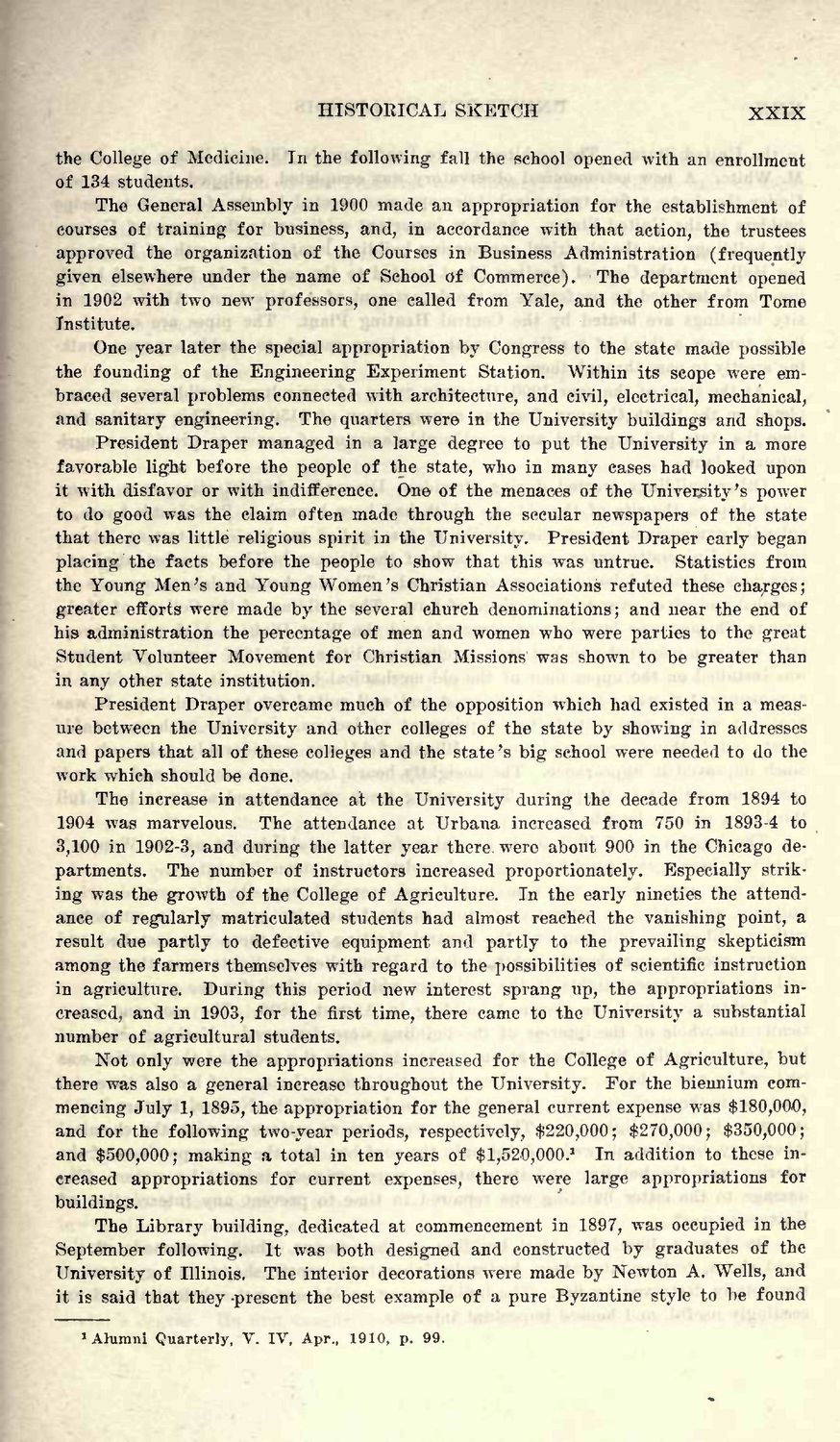| |
| |
Caption: Book - Early History of University (1916)
This is a reduced-resolution page image for fast online browsing.

EXTRACTED TEXT FROM PAGE:
HISTORICAL SKETCH XXIX the College of Medicine. In the following fall the school opened with an enrollment of 134 students. The General Assembly in 1900 made an appropriation for the establishment of courses of training for business, and, in accordance with that action, the trustees approved the organization of the Courses in Business Administration (frequently given elsewhere under the name of School of Commerce). The department opened in 1902 with two new professors, one called from Yale, and the other from Tome Institute. One year later the special appropriation by Congress to the state made possible the founding of the Engineering Experiment Station. Within its scope were embraced several problems connected with architecture, and civil, electrical, mechanical, and sanitary engineering. The quarters were in the University buildings and shops. President Draper managed in a large degree to put the University in a more favorable light before the people of the state, who in many cases had looked upon it with disfavor or with indifference. One of the menaces of the University's power to do good was the claim often made through the secular newspapers of the state that there was little religious spirit in the University. President Draper early began placing the facts before the people to show that this was untrue. Statistics from the Young Men's and Young Women's Christian Associations refuted these charges; greater efforts were made by the several church denominations; and near the end of his administration the percentage of men and women who were parties to the great Student Volunteer Movement for Christian Missions' was shown to be greater than in any other state institution. President Draper overcame much of the opposition which had existed in a measure between the University and other colleges of the state by showing in addresses and papers that all of these colleges and the state's big school were needed to do the work which should be done. The increase in attendance at the University during the decade from 1894 to 1904 was marvelous. The attendance at Urbana increased from 750 in 1893-4 to 3,100 in 1902-3, and during the latter year there, were about 900 in the Chicago departments. The number of instructors increased proportionately. Especially striking was the growth of the College of Agriculture. In the early nineties the attendance of regularly matriculated students had almost reached the vanishing point, a result due partly to defective equipment and partly to the prevailing skepticism among the farmers themselves with regard to the possibilities of scientific instruction in agriculture. During this period new interest sprang up, the appropriations increased, and in 1903, for the first time, there came to the University a substantial number of agricultural students. Not only were the appropriations increased for the College of Agriculture, but there was also a general increase throughout the University. For the biennium commencing July 1, 1895, the appropriation for the general current expense was $180,000, and for the following two-year periods, respectively, $220,000; $270,000; $350,000; and $500,000; making a total in ten years of $1,520,000." In addition to these increased appropriations for current expenses, there were large appropriations for buildings. The Library building, dedicated at commencement in 1897, was occupied in the September following. I t was both designed and constructed by graduates of the University of Illinois. The interior decorations were made by Newton A. Wells, and it is said that they -present the best example of a pure Byzantine style to be found 'Alumni Quarterly, V. IV, Apr., 1910, p. 99.
| |